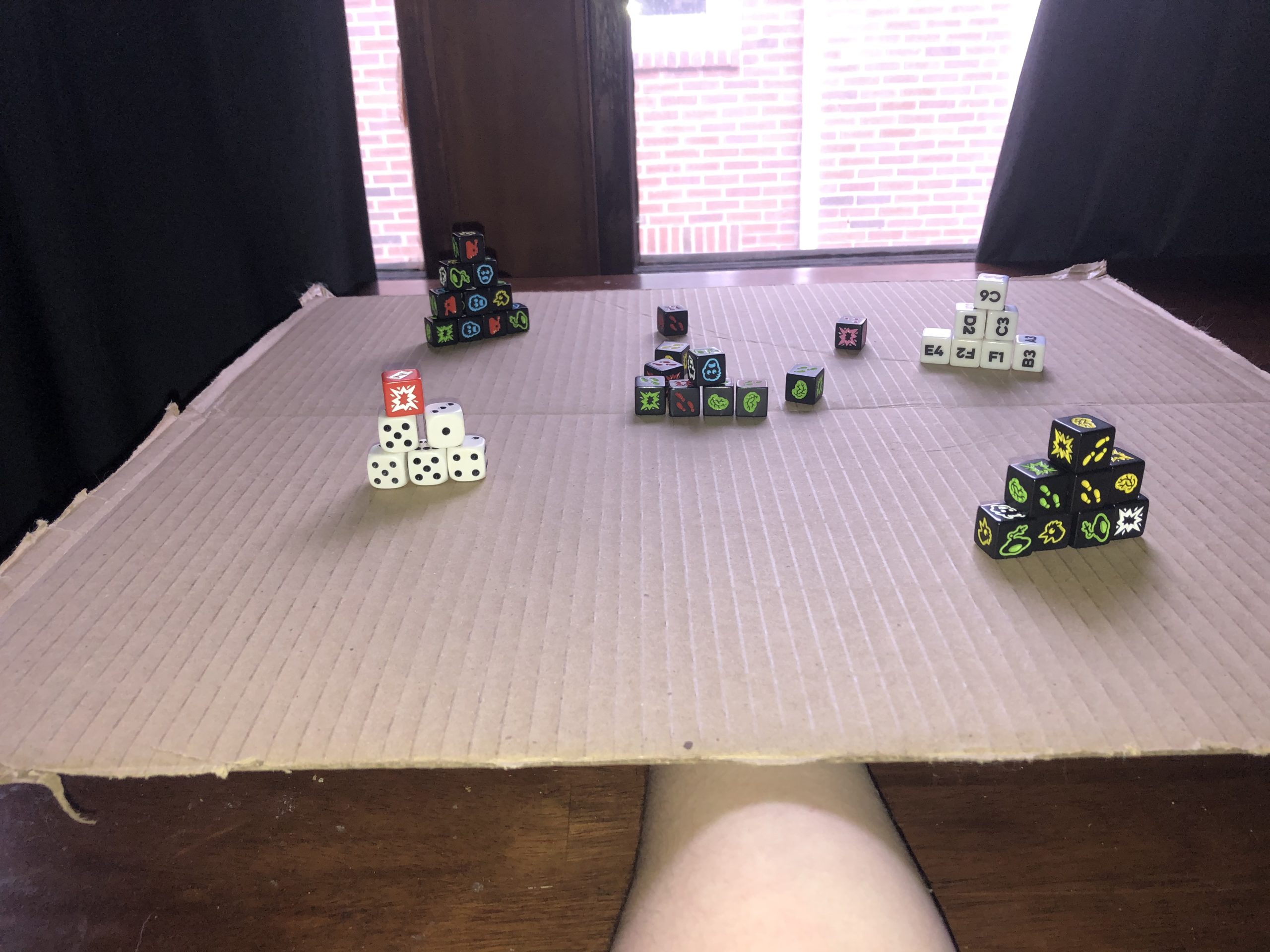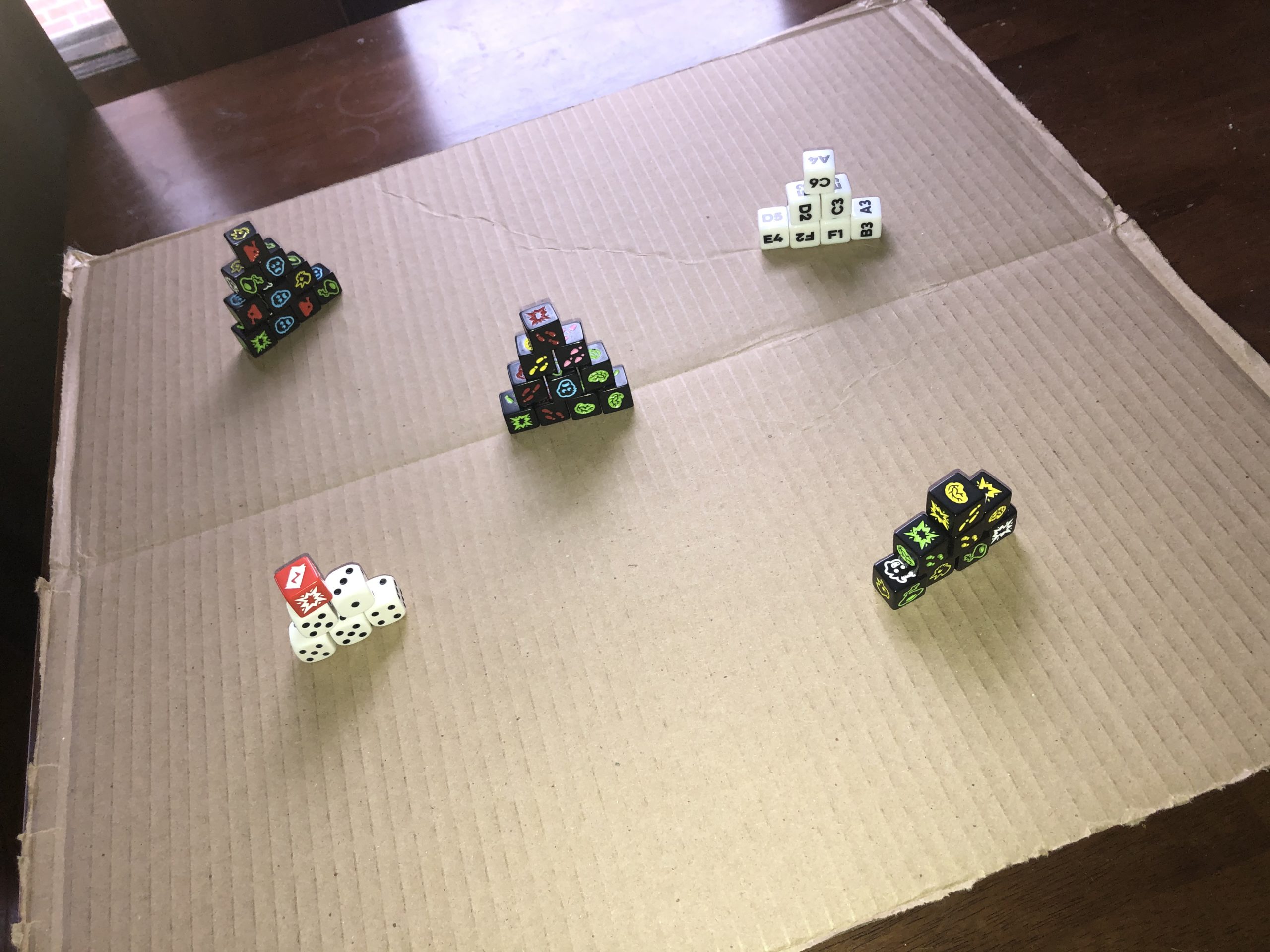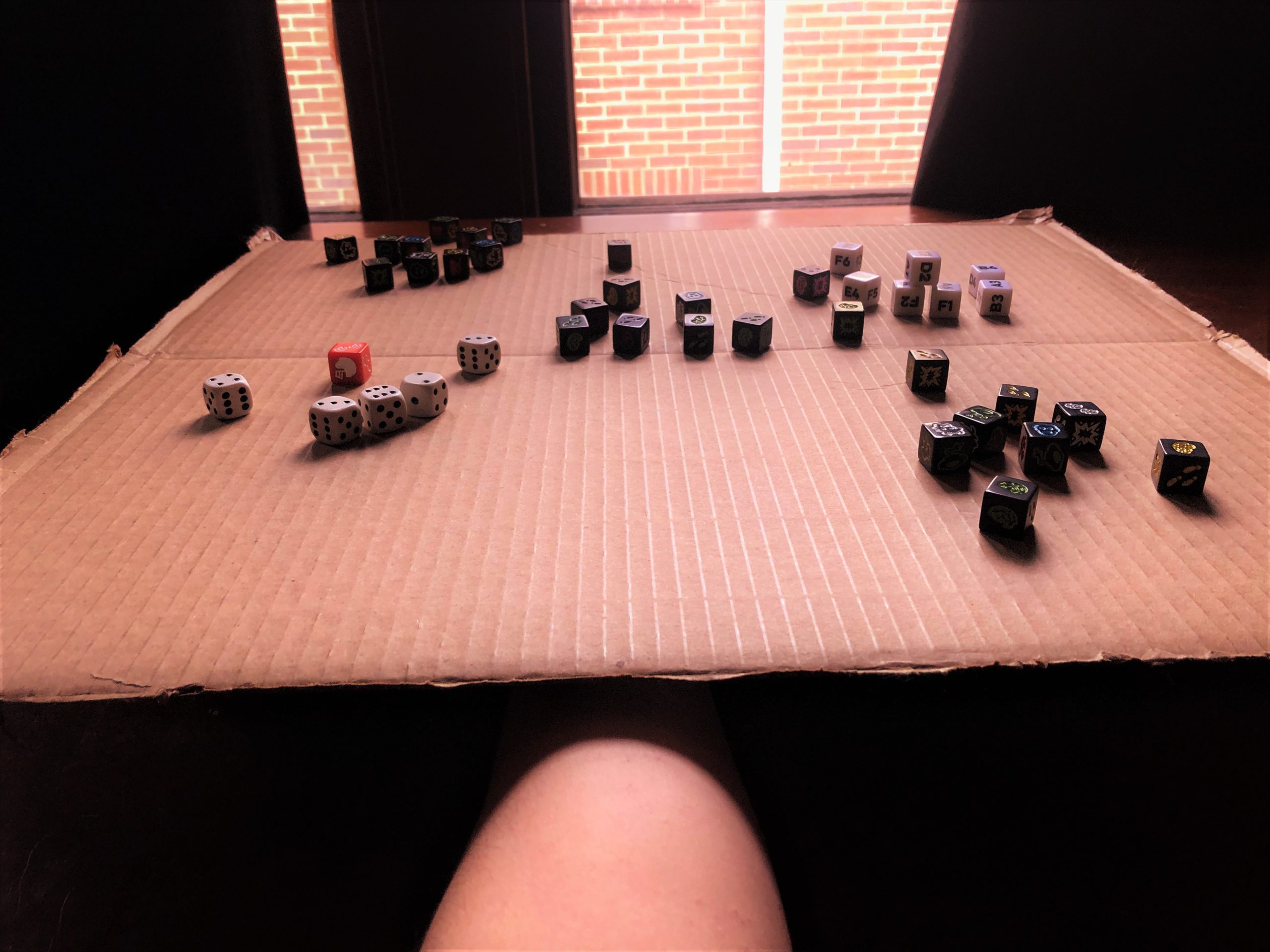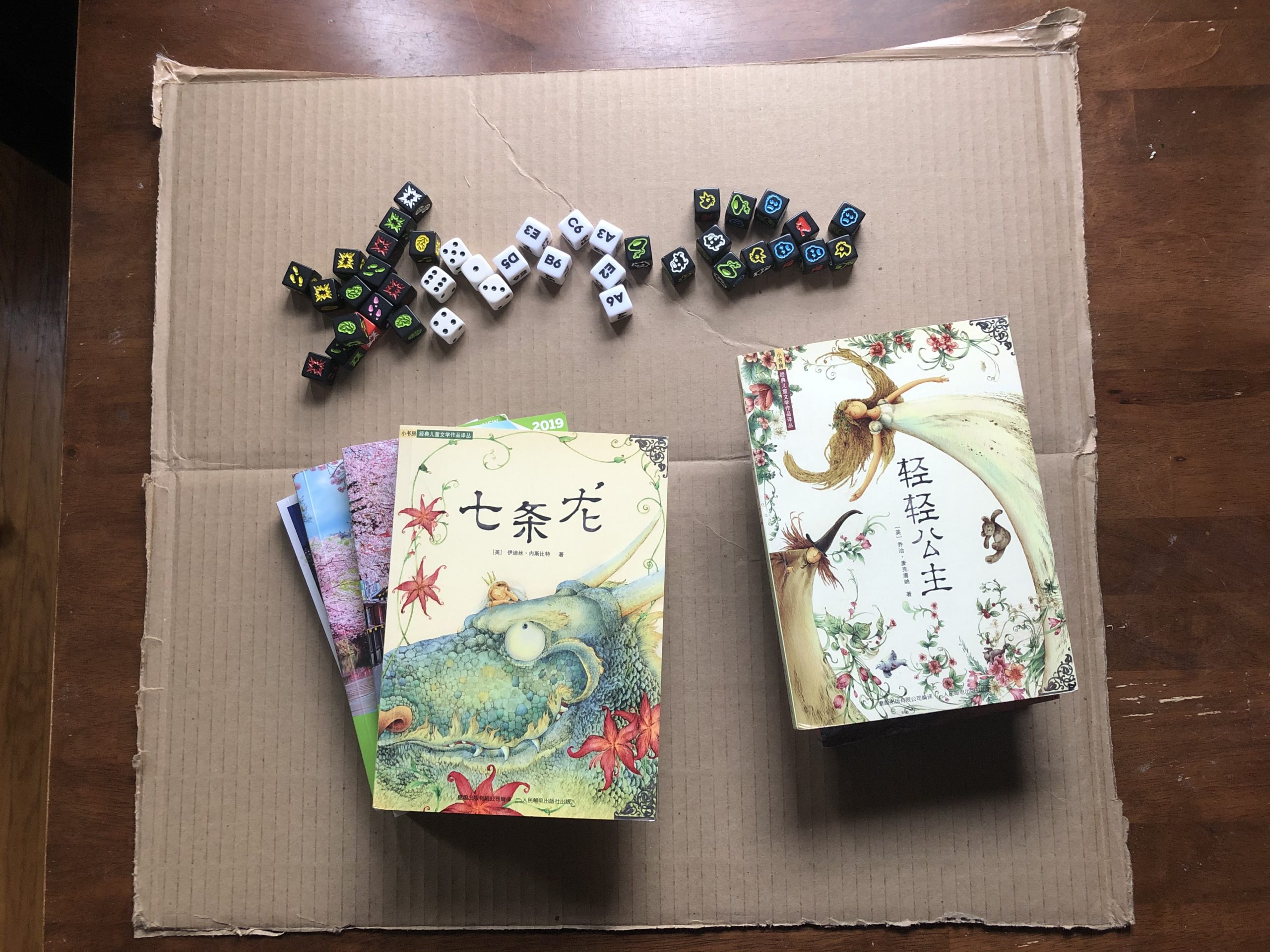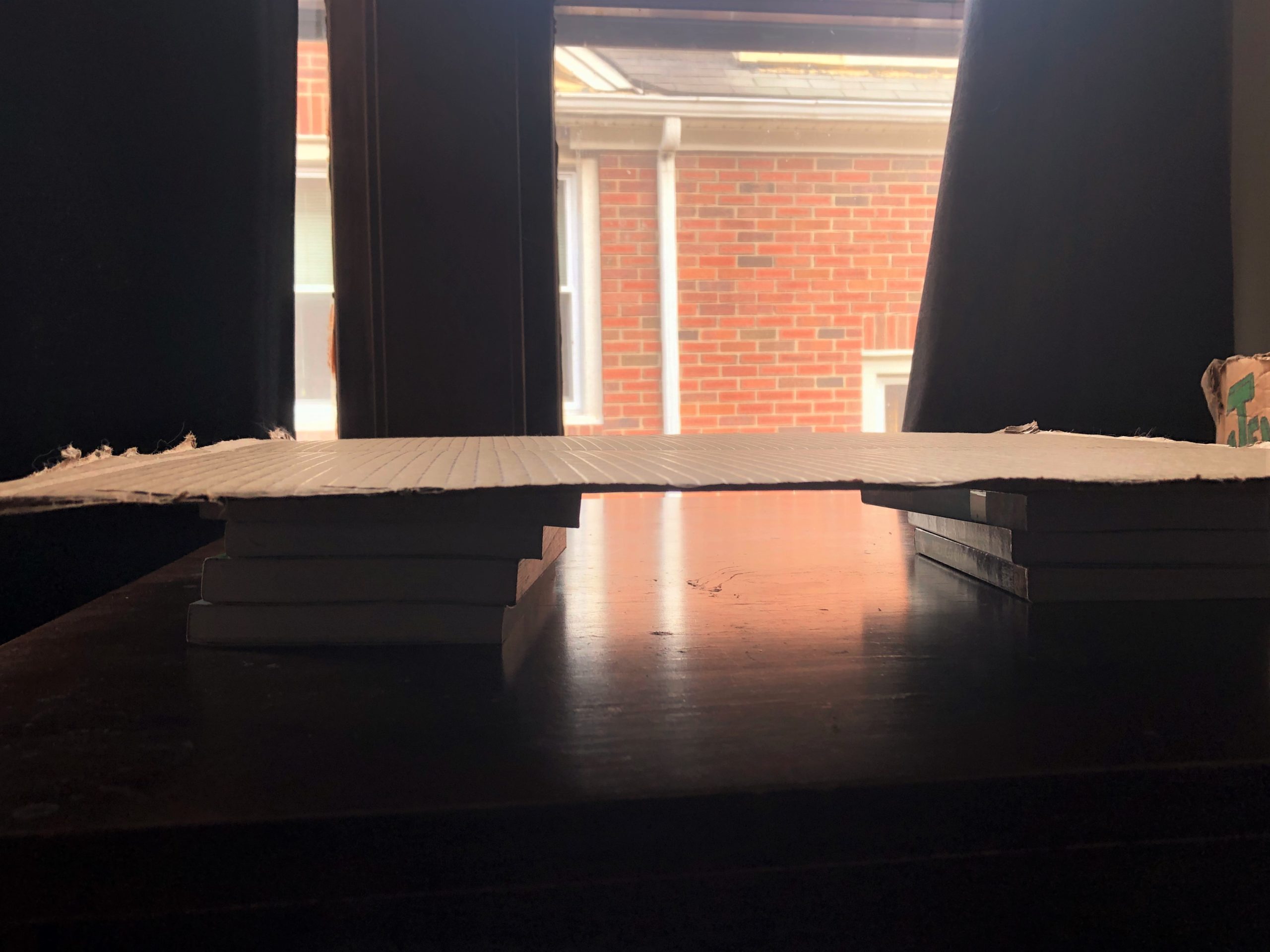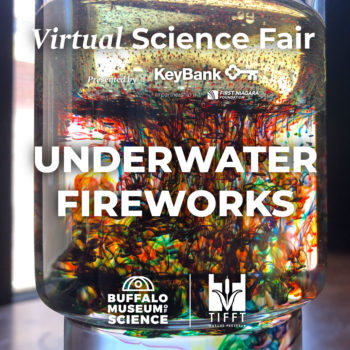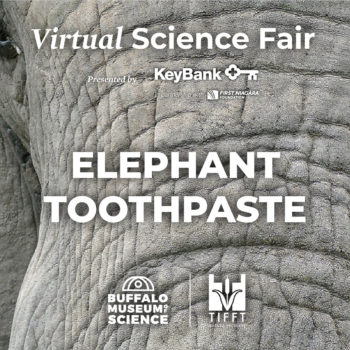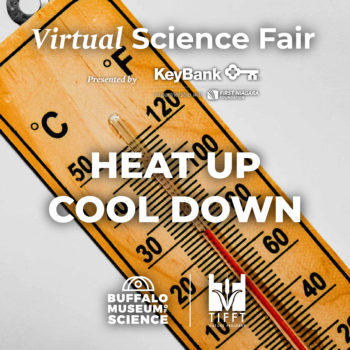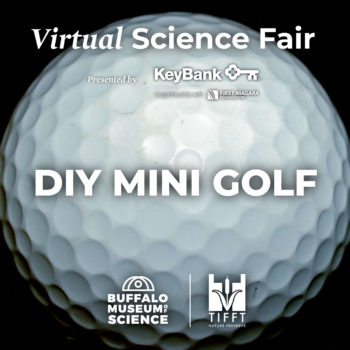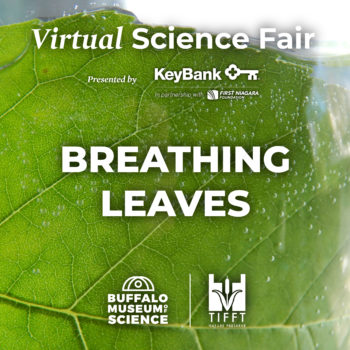Earthquake Epicenter

Have science fun as a family! Complete activities with parental supervision.
Materials:
- A large, flat piece of cardboard
- Stack of books
- Building materials (blocks, loosely connected Lego bricks, dice, crackers—anything that can stack)
Procedure
- On a floor or table, stack the books in two even piles. They should be about 4 inches high.
- Place the cardboard on top of the books. Make sure you have room to stretch your arm between the books under the cardboard.
- On top of the cardboard, use your building materials to create buildings. We used dice, but anything that stacks can work! Build your buildings at different places on the cardboard. Make sure to build one building in the center of the cardboard.
- Once your buildings are constructed, it’s time to see if they can withstand an earthquake. Carefully put your arm under the cardboard and gently tap on the center of the cardboard—this is known as the epicenter. What do you notice?
- Keep tapping, but tap harder and harder. What happens to the buildings? Did they crash? Which ones toppled over first?
- Rebuild and try again, but tap in a different part of the cardboard, If you change where the epicenter is, does it change what happens to the buildings?
- Be sure to take a picture or video to share in the Facebook comments on the Buffalo Museum of Science or Tifft Nature Preserve pages!
What’s it all about?
It doesn’t usually look like it, but the surface of the Earth is constantly moving—just very slowly. This movement can sometimes produce earthquakes.
Earthquakes start beneath the ground, at a location called the focus. Seismic waves that move the ground and produce the shaking feeling spread (or propagate) from this focus.
When scientists pinpoint where an earthquake happened, they locate the epicenter—The point on the Earth’s surface directly above the focus.
Earthquakes can vary depending on what kind of rock the earthquake’s seismic waves travel through, but they are always strongest by the epicenter. So, damage to buildings to other structures is often greater at the epicenter.
Try It!
- Try building with other materials. Which materials stand up better than others?
- Using your original building materials, create a differently shaped building. Do different shapes stay together better than others?
